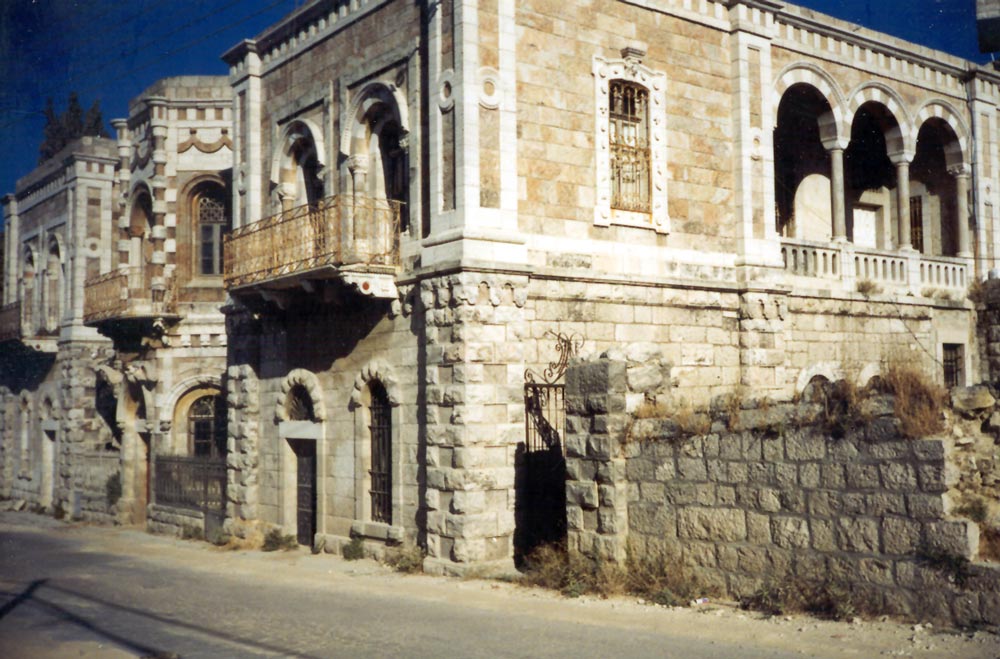
Home UpBethlehem 2: the New City
New Bethlehem doesn't have a lot to recommend it, but it does have plenty of excuses. The Jordanians starved the West Bank and thought only of "modernizing" it. The Israelis, in charge after 1967, have invested next to nothing except for security and boxes and boxes of red tape to strangle Palestinian investment.
About 1900 Bethlehemites with money began moving to "villas" outside the town. Here's one, up the hill and in the neighboring town of Beit Jala. (It's the house adjoining the small oil mill shown in the previous folder.) Its Italianate character is consistent with Bethlehem's reputation as the most Westernized of the West Bank's old cities.
Close-up of the entrance to the same building. A life-sized statue of one of the builders of the house can be seen standing on the balcony. It's doubtful if he ever saw the building, paid for with money he sent from Chile.
Interior of the main parlor. The domed ceiling is traditional and genuine, though the *trompe l'oeil *ribs are not.
A lifetime later, villas are still being built. The cylindrical arcade supports an inaccessible balcony. No matter: no architect on the West Bank ever went broke from bad taste.
Home for Spiderman.
There's lots more like this.
Exceptions? Yes. This one is just north of Bethlehem, near the Jerusalem checkpoint.
Not everyone can afford a villa, and land is terrifically expensive. The solution, of course, is to go up, even though Bethlehemites don't like it.
The city's ugliest building was built with American foreign-aid funds. It stands on what had been a greenbelt immediately north of town. Now visitors coming to the Church of the Nativity see this instead of olives. The only thing missing is a sign announcing that the building won a prize for environmentally insensitive design.
Back in the center of Bethlehem, the Old City was renovated for the millennium. Heritage preservation was suddenly the order of the day. It came too late here, where an apartment building had already been crammed into a narrow lot near the city center.
Another example, this one less than 100 yards from the Church of the Nativity, one of whose towers can be made out in the distance.
The main commercial street in Bethlehem branches off from the Hebron Road and heads east along the ridge that stretches to the Church of the Nativity. A few old houses can still be seen along the way, but they're going fast.
Farther along the same street, almost always crowded.
Just south of Bethlehem is the much-visited Daheisha refugee camp. It fronts the Hebron Road, shown here with a furniture store across the road from the camp.
Within a year the store had neighbors.